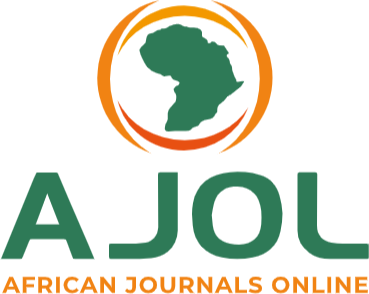Synthetic Approaches, Classification, Properties and Application of Metal-Organic Frameworks: A Review
Keywords:
Metal–organic frameworks (MOFs); Synthetic methods, Classification, Applications of MOFsAbstract
Metal-organic (MOF) is a group compound that consists of an ion or metal group coordinated by organic ligands to make many-dimensional structures. MOFs are subclassed by coordinated polymers with speciality porous structures. The pursuit of rapid development in the area of catalysis, solar energy, environmental remediation, wastewater treatment and other aspects of ecological and sustainable chemistry has prompted substantial research by material chemists, physicists, academics and other scientists for the development of porous material. A lot of energy had been invested in this course by scientists, research organizations and public sector agencies from antiquity, but the resulting solution was somewhat undesirable until two decades ago when Metal-Organic Frameworks (MOFs) appeared to offer a glimpse of a solution to those challenging issues. The adaptability, flexibility, uniqueness and usability of the metal-organic frameworks material, and its suitability to every facet of scientific and technological advancement has since triggered an incredible upsurge in studies aimed at uncovering more of the inherent influential properties of the materials, and its improvement for the betterment of material science and research world. This review is aimed at investigating some of the recent advancements/breakthroughs in metal-organic frameworks, synthetic methodologies and applications.
Downloads
Published
Issue
Section
Similar Articles
- Precious Ogechi Ufomba, Ogochukwu Susan Ndibe, IoT and Network Security: Researching Network Intrusion and Security Challenges in Smart Devices , Communication In Physical Sciences: Vol. 9 No. 4 (2023): VOLUME 9 ISSUE 4
- S. Chitra, Adsorption studies on the inhibition of the corrosion of mild steel in 2 M NaCl by tetracycline and neomycin trisulphate drugs , Communication In Physical Sciences: Vol. 5 No. 1 (2020): VOLUME 5 ISSUE 1
- Usman Umar Modibbo, John Stanley, Martins Moses, Victoria John Danjuma, Nutritional and Chemical Characterization of Avocado Oil from Three Cultivars in Mambila Plateau, Taraba State, Nigeria , Communication In Physical Sciences: Vol. 12 No. 6 (2025): Volume 12 ISSUE 6
- Ifeanyi E. Otuokere, K. K. Igwe, Chelating and Antibacterial Potentials of Benzylpenicillin and its Ni(II) Complex , Communication In Physical Sciences: Vol. 8 No. 2 (2022): VOLUME 8 ISSUE 2
- Okoche Kelvin Amadi, Stella Mbanyeaku Ufearoh, Innocent Ajah Okoro, Paulina Adaeze Ibezim, Mitigation of the Corrosion of Mild Steel in Acidic Solutions Using An Aqueous Extract of Calopogonium muconoide (cm) as a green corrosion inhibitor , Communication In Physical Sciences: Vol. 8 No. 3 (2022): VOLUME 8 ISSUE 3
- Emeka Chima Ogoko, Kelle Henrietta Ijeoma, Gana J. Babaman, Quality Evaluation of Some Brands of Amoxicillin Capsules Dispensed in Lagos State, Nigeria , Communication In Physical Sciences: Vol. 7 No. 4 (2021): VOLUME 7 ISSUE 4
- Olaleye Ibiyeye, Joy Nnenna Okolo, Samuel Adetayo Adeniji, A Comprehensive Evaluation of AI-Driven Data Science Models in Cybersecurity: Covering Intrusion Detection, Threat Analysis, Intelligent Automation, and Adaptive Decision-Making Systems , Communication In Physical Sciences: Vol. 8 No. 4 (2022): VOLUME 8 ISSUE 4
- Ahmad Rufai Bala, Abdullahi Sahal , Phytochemical Screening and Anti-microbial Properties of Herbal Medicines used for Treatment of Typhoid and Bacterial/Viral Infection in Kaduna State , Communication In Physical Sciences: Vol. 11 No. 1 (2024): VOLUME 11 ISSUE 1
- Tope Oyebade, Chemical Pollutants and Human Vulnerability: An Integrated Review of Environmental Chemistry and Public Health , Communication In Physical Sciences: Vol. 9 No. 4 (2023): VOLUME 9 ISSUE 4
- Nyeneime William Akpanudo, Ojeyemi Matthew Olabemiwo, Pore Parameters Analysis of Echinochloa pyramidalis leaf Dopped Silver Nanoparticles , Communication In Physical Sciences: Vol. 11 No. 4 (2024): VOLUME 11 ISSUE 4
You may also start an advanced similarity search for this article.




